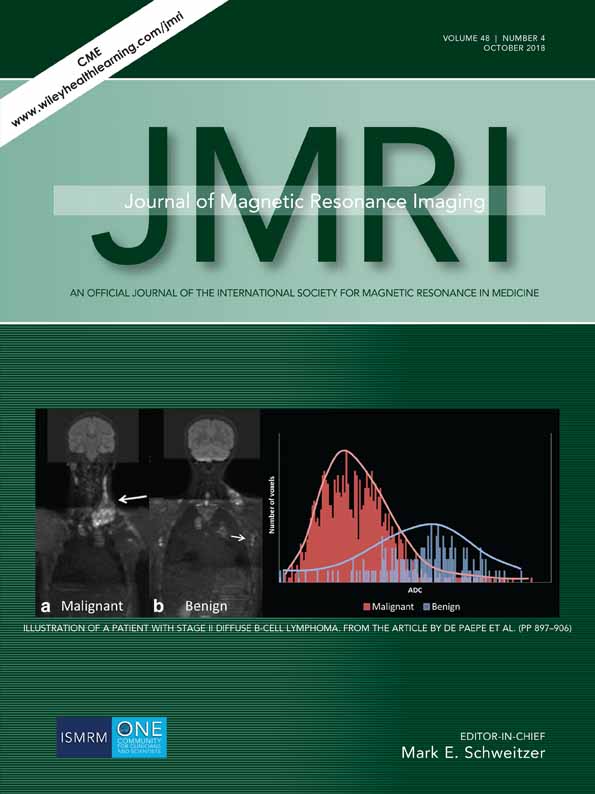Frequency Offset Corrected Inversion Pulse for B0 and B1 Insensitive Fat Suppression at 3T: Application to MR Neurography of Brachial Plexus
Abstract
Background
The 3D short tau inversion recovery (STIR) sequence is routinely used in clinical MRI to achieve robust fat suppression. However, the performance of the commonly used adiabatic inversion pulse, hyperbolic secant (HS), is compromised in challenging areas with increased B0 and B1 inhomogeneities, such as brachial plexus at 3T.
Purpose
To demonstrate the frequency offset corrected inversion (FOCI) pulse as an efficient fat suppression STIR pulse with increased robustness to B0 and B1 inhomogeneities at 3T, compared to the HS pulse.
Study Type
Prospective.
Subjects/Phantom
Initial evaluation was performed in phantoms and one healthy volunteer by varying the B1 field, while subsequent comparison was performed in three healthy volunteers and five patients without varying the B1.
Field Strength/Sequence
3T; 3D TSE-STIR with HS and FOCI pulses.
Assessment
Brachial plexus images were qualitatively evaluated by two musculoskeletal radiologists independently using a four-point grading scale for fat suppression, shading artifacts, and nerve visualization.
Statistical Test
The Wilcoxon signed-rank test with P < 0.05 was considered statistically significant.
Results
Simulations and phantom experiments demonstrated broader bandwidth (2.5 kHz vs. 0.83 kHz, increased B0 robustness) at the same adiabatic threshold and lower adiabatic threshold (5 μT vs. 7 μT at 3.5 ppm, increased B1 robustness) at the same bandwidth with the FOCI pulse compared to the HS pulse With increased bandwidth, the FOCI pulse achieved robust fat suppression even at 50% of maximum B1 strength, while the HS pulse required >75% of maximum B1 strength. Compared to the standard 3D TSE-STIR with HS pulse, the FOCI pulse achieved uniform fat suppression (P < 0.05), better nerve visualization (P < 0.05), and minimal shading artifacts (P < 0.01) in brachial plexus at 3T.
Data Conclusion
The FOCI pulse has increased robustness to B0 and B1 inhomogeneities, compared to the HS pulse, and enables uniform fat suppression in brachial plexus at 3T.
Level of Evidence: 1
Techinical Efficacy: Stage 1
J. Magn. Reson. Imaging 2018;48:1104–1111.
Conflict of Interest Statement
I.E.D. is an employee of Philips Healthcare. He provided technical assistance in the implementation of the FOCI pulse and sequence optimization, however, was not involved in human imaging or image analysis. The data remained in the control of the authors, who were not employees of Philips Healthcare.




